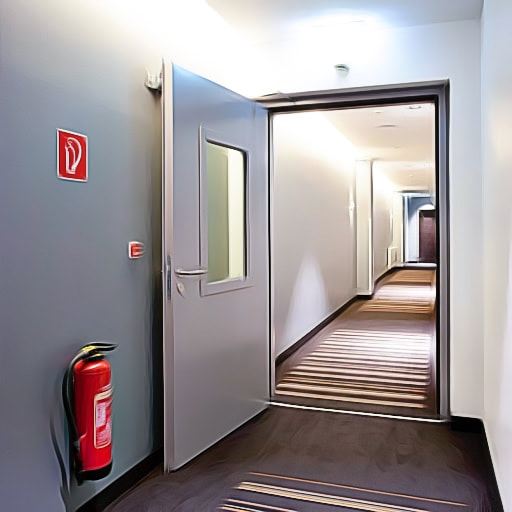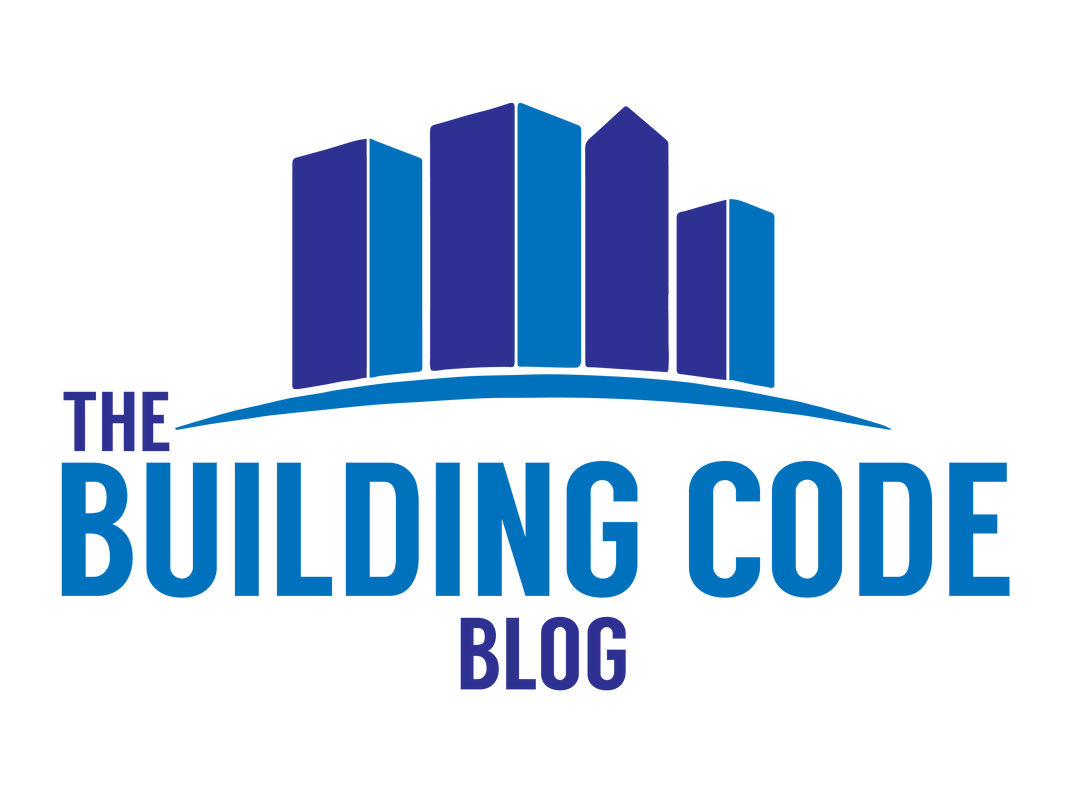|
For years, architect clients have asked me for a code colution to solve the challenge of corridors that exceed the dead end limit. As a quick reference, dead ends are limited to 20 feet, except in Groups B, E, F, I-1, M, R-1, R-2, R-4, S and U with a full NFPA 13 sprinkler system, where the limit is increased to 50 feet (2021 IBC 1020.5). Up until recently, my normal suggestion has been to place a cross-corridor door to break up the length of any one corridor segment to less than 50 (or 20) feet. This has been accepted in numerous jurisdictions and also validated by an ICC staff opinion that I requested on the topic. In many cases, I have seen the cross corridor door on magnetic hold opens, to release upon activation of the fire alarm system But on a recent project, a local AHJ has taken the stance that a cross corridor door does not mitigate a dead end condition. I scheduled a meeting with the AHJ to explain how this has been done on other projects and to share the ICC interpretation, but they were reluctant to budge. After some negotiations, the AHJ allowed the door, but insisted that it not be held open and also required a large "Not an Exit" sign on the door itself. I have drawn up a similar situation in the image below. The corridor is serving a Group R-2 occupancy, so the dead end limit is 50 feet. New Development: An ICC Committee InterpretationA couple of years after obtaining an ICC Staff Opinion on this matter, I finally decided to request an ICC Committee Interpretation. A Committee Interpretation is developed and approved by the ICC Interpretations Committee and generally carries a little more weight than a lone staff opinion. Fortunately, the Committee Interpretation came back favorably. Check out the language below (or you can view the entire document here). Yes. The installation of an intervening door within a corridor may be utilized to meet the dead-end corridor maximum length requirements of Section 1020.5. The strategic location of an intervening door, which does not swing in the direction of egress travel and is not provided with exit signage, significantly increases the probability that the occupant will turn around instead of continuing beyond the door into the last section of the dead-end corridor looking for an exit. The placement of the intervening door must be such that each corridor segment on either side of the door is within the dead-end corridor length requirements of Section 1020.5. Dead End Corridors: What Do You Think?Do cross-corridor doors mitigate the 20 foot dead end limit? Do you think they should be permitted to be held open?
Let me know your thoughts in the comment box! Need assistance on your specific project? Add Campbell Code Consulting to your team. They are a full-service code consulting and fire protection engineering firm that can help you navigate complex code challenges.
20 Comments
Matt Benfer
4/16/2020 09:45:54 am
Sounds like a valid approach. I think the "Not an Exit" sign is a must have on this type of a door as the whole purpose is to prevent the rest of the normally dead end corridor as being attempted to be used for egress. Whether the door is held open or not doesn't seem to be a huge issue to me, except that I would think that a door which is not magnetically held open is probably more likely to be propped open by other means, this negating the door.
Reply
Chris Campbell
4/16/2020 09:58:50 am
Thanks for the reply, Matt. I like the point about the door being more likely to be propped open if the magnetic hold opens are not provided...will have to bring that up next time I chat with this particular AHJ!
Reply
8/9/2023 09:50:59 am
Because the length of a dead end corridor is measured from the end point of the corridor to the location where occupants have a choice of two directions leading to separate exits, it would be up to the AHJ for acceptance. In the strictest interpretation I would say no, but with less restrictive interpretation, possibly with limits. I would think that the hall door must be operable by persons with a key only making second corridor occupants subject only to Common path requirements (assuming hall is less than 20 feet). Either way less than ideal and should be avoided where reasonably possible.
Reply
Brian Lukus
4/16/2020 06:14:46 pm
I have seen this situation approved with a locking hardware set on the cross-corridor door in addition to the door holder and signage. Some other things to consider:
Reply
Chris Campbell
4/17/2020 07:57:56 am
Hi Brian,
Reply
Kelly Kidwell
5/9/2020 11:49:44 am
2) You can require all doors on magnetic holds to close upon alarm regardless of alarm initiation point. It's all in the wiring and programming, but that could mitigate concerns regarding doors being held open when no smoke is in that corridor.
Bruce Verhei
4/16/2020 09:57:25 pm
Good evening.
Reply
Chris Campbell
4/17/2020 07:59:13 am
Thanks for sharing your thoughts Bruce!
Reply
Ryan Indorf
4/27/2020 11:54:07 pm
If an AHJ is hesitant to approve a cross-corridor door to prevent continued travel in the opposite direction of an exit, I would be curious to hear their thoughts on interruption gates within exit stairs.
Reply
Kelly Kidwell
5/9/2020 11:57:09 am
I think in a lot of ways, dead ends are bad design. Bad for egress and life safety, but also bad for circulation under normal circumstances. My first line of defense is trying to get the architects to improve their design and eliminate long dead ends altogether. Normally a long dead end is an opportunity for another through-way for circulation or an opportunity to add some closets.
Reply
Chris Campbell
5/18/2020 11:30:05 am
Thanks for the thoughts Kelly, hope all is well with you!
Reply
10/18/2021 07:31:25 am
Hello,
Reply
Chris Campbell
10/19/2021 08:53:39 am
Hi David,
Reply
2/1/2022 01:35:46 pm
"This has been accepted in numerous jurisdictions and also validated by an ICC staff opinion that I requested on the topic."
Reply
Steve Bergeron
4/7/2022 02:03:51 pm
Is the consensus here that a cross-corridor wall and door would be treated like any other corridor wall/ door from a fire-rating standpoint?
Reply
Chris Campbell
4/7/2022 03:33:42 pm
I'm not aware of anything that would require a higher rating.
Reply
12/23/2023 04:25:44 am
I believe adding door in the corridor in order to duplicate the dead end limitation is not accepted, as this eliminate the concept of dead end entirely
Reply
Jeff Evans
4/11/2024 07:33:36 pm
Finally. . .
Reply
Ajay V Prasad
5/28/2024 11:38:32 am
Thanks Jeff, I was going to the same place. I'm still getting push back on your FI for the exit access door vs. egress path remoteness.
Reply
Leave a Reply. |
Categories
All
Sign up to receive Building Code Blog UpdatesArchives
July 2024
|
The Building Code Blog
- Home
- Blog
- About
-
Tools
- Allowable Height & Area Calculator - Non-Separated Mixed Occupancy
- Allowable Height & Area Calculator - Separated Mixed Occupancy
- Average Grade Plane Calculator
- Calculated Fire Resistance for Wood Walls
- Fire and Smoke Damper Tool
- Fire Wall/Exterior Wall Intersection Tool
- Frontage Calculator
- IBC Occupant Load Calculator
- Plumbing Fixture Calculator
- Stair Pressurization Estimator
HomeAboutBlogContact |
Copyright © 2019-2024 The Building Code Blog
The views, opinions, and information found on this site represent solely the author and do not represent the opinions of any other party, including the author's employer and the International Code Council, nor does the presented material assume responsibility for its use. Local codes and amendments may vary from the code requirements described herein. Fire protection and life safety systems constitute a critical component of public health, safety and welfare and you should consult with a licensed professional for proper design and code compliance.
|



 RSS Feed
RSS Feed
